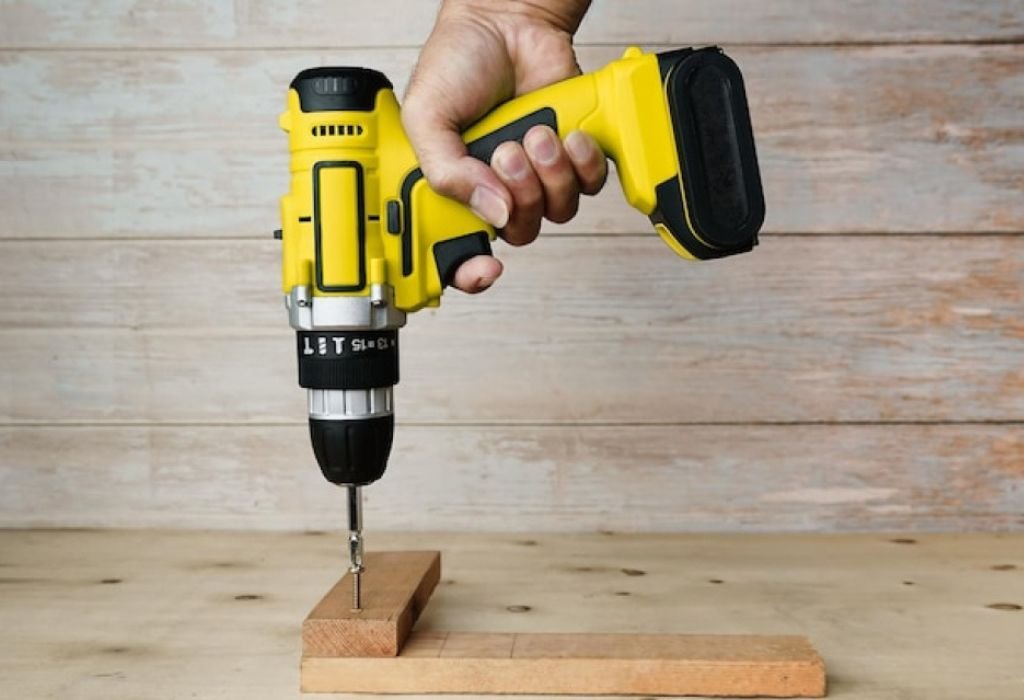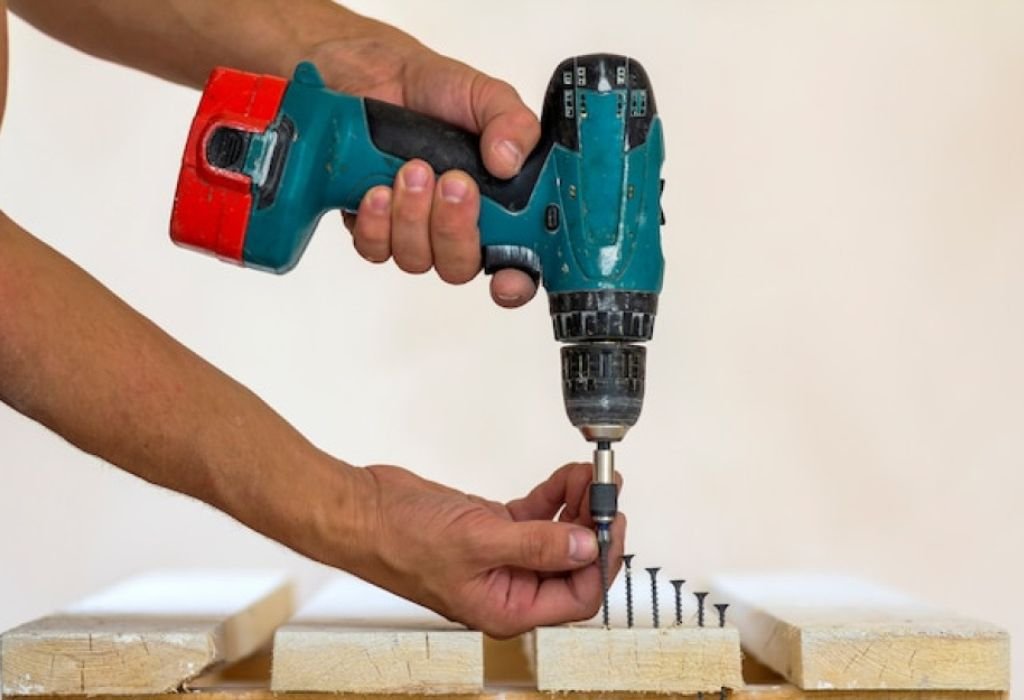Imagine standing in your workshop with only an impact driver on hand, but a task requires drilling a clean hole into a piece of hardwood.
Many DIYers face this challenge and wonder if using a drill bit with an impact driver is possible without breaking the bit or damaging the material.
One common mistake is using regular drill bits in an impact driver without realizing they are not designed for the intense torque and concussive force of the tool.
This often leads to bit breakage, wobble, or rough holes. According to industry reports, tool accidents caused by improper accessory use account for thousands of emergency visits every year (source).
Curiosity about impact-rated drill bits and their compatibility with hex shank chucks has grown as more homeowners rely on cordless tools.
Studies show that cordless impact drivers are among the fastest-growing power tools in the DIY market, with sales increasing over 20% in the last five years (source).
This rising popularity makes it even more critical to know how to use them correctly.
The benefit of learning safe drilling practices with an impact driver goes beyond efficiency.
With the right bit and technique, users can save time, extend the life of their tools, and reduce the risk of accidents.
This guide explores how to use a drill bit with an impact driver safely, including step-by-step instructions, essential tips, and answers to the most common questions about materials, precision, and safety.
What Is an Impact Driver vs a Standard Drill

An impact driver is a power tool that combines rotational force with rapid concussive bursts, making it ideal for driving screws and fasteners into tough materials. A standard drill, on the other hand, delivers continuous rotational power with adjustable speed, designed for precision drilling in wood, metal, and other surfaces.
The biggest difference lies in the chuck. A drill typically uses a three-jaw keyed or keyless chuck that accepts round-shank bits, while an impact driver relies on a 1/4-inch hex quick-change chuck. This makes the impact driver faster at swapping bits but limits it to hex-shank accessories.
Another distinction is torque. Impact drivers deliver far higher torque, which helps loosen stubborn fasteners and drive long screws with less effort. Standard drills prioritize control and accuracy, making them better suited for clean holes and delicate work.
Because of these differences, using a drill bit with an impact driver requires caution. Only impact-rated hex-shank bits are designed to withstand the extra torque and percussive force of the tool. Attempting to use standard round-shank drill bits may result in slippage, wobble, or bit breakage.
What is the main difference between an impact driver and a drill?
An impact driver delivers bursts of high torque with hex-shank bits, while a drill provides continuous rotation for precise holes.
Does an impact driver have a chuck?
Most impact drivers use a 1/4-inch quick-change hex chuck instead of a three-jaw drill chuck.
Why does torque matter for drilling?
High torque helps in tough jobs but can snap standard bits if they are not impact-rated.
What kinds of bits are compatible with an impact driver?
Only hex-shank bits, ideally marked as impact-rated, are safe to use.
Can an impact driver replace a drill for all hole-making tasks?
No, it works for rough or pilot holes, but a standard drill is better for precise, clean holes.
Common Risks and Problems Using a Drill Bit in an Impact Driver
Using the wrong bit in an impact driver often results in breakage due to the high torque and percussive forces. Regular drill bits are not designed for these stresses and may shatter or bend quickly.
Another common issue is wobble or misalignment when drilling holes. The hex chuck may introduce slight play, and longer bits tend to flex under load, producing rough or oversized holes.
Precision is also a challenge. Unlike drills, which are built for accuracy, impact drivers excel in power but often sacrifice clean hole edges and exact depth control.
Safety risks increase when bits slip or fracture during use. Flying debris, sudden kickback, or material damage can occur if the tool is misused.
Overheating is another problem. Impact drivers can spin at high speeds, generating excess heat that dulls or weakens drill bits quickly, especially in metal or dense hardwood.
Why do drill bits break when used in an impact driver?
Because regular bits are not built for percussive torque, they can snap or shatter.
What causes wobble or misalignment?
The quick-change hex chuck may allow play, and long bits flex more under force.
Can impact driver holes damage materials?
Yes, they may produce rough edges or oversize holes, especially in hard surfaces.
Is fatigue or safety hazard higher with impact drivers?
Yes, the vibration, kickback, and risk of slipping increase strain and danger.
What happens if bits overheat?
They lose hardness, dull faster, and are more likely to fail.
Choosing the Right Drill Bit and Accessories
The key to drilling safely with an impact driver is selecting the right bit. Impact-rated drill bits are manufactured from hardened steel and engineered to withstand shock loads.
Always use 1/4-inch hex shank bits to fit the quick-change chuck securely. These reduce slippage and handle torque better than standard round-shank designs.
Different materials require different bit compositions. For example, titanium-coated or cobalt bits are best for metal, while brad-point or auger bits are better for wood.
Shorter bits usually provide more stability. Longer bits may increase wobble, making it harder to drill straight and precise holes.
Accessories like bit holders, adapters, and pilot hole sets improve flexibility. However, adapters that allow round-shank bits may reduce safety and increase risk.
What does “impact-rated” mean in a drill bit?
It means the bit is engineered to handle high torque and shock from impact drivers.
Can standard HSS bits be used in an impact driver?
They can for light jobs, but they risk breaking in tougher materials.
What shank type works with an impact driver?
Always use 1/4-inch hex shank bits for secure fit and safety.
Does bit length affect drilling results?
Yes, longer bits wobble more, while shorter bits stay stable.
Are adapters safe for round-shank bits?
They can be used, but they add play and increase risk of failure.
Step-by-Step Guide: How to Use a Drill Bit with an Impact Driver Safely
First, select an impact-rated hex-shank drill bit suitable for the material you plan to drill. Confirm the bit is undamaged and seated properly in the chuck.
Insert the bit by pulling back the collar on the hex chuck, sliding the bit in fully, and releasing until it locks in place. Tug gently to ensure a secure fit.
Position the impact driver squarely on the work surface. Use firm grip and pressure, but avoid forcing the tool, letting the torque do the work.
Start with lower speed to prevent slipping, especially on smooth surfaces. For hard materials, create a small pilot hole to guide the bit.
Pause periodically to clear debris and prevent overheating. If drilling metal, use lubricant to reduce friction and extend bit life.
How do you insert a drill bit in an impact driver?
Pull back the collar, insert the bit fully, release, and check it locks.
Should a pilot hole be drilled first?
Yes, especially in hard materials to improve accuracy and reduce stress.
What speed is recommended when drilling?
Use low to medium speed at first, increasing gradually if needed.
How do you clear chips or debris safely?
Lift the bit out occasionally and brush or blow away chips.
How do you finish a hole cleanly?
Slow down near the end and lift the bit carefully to avoid tear-out.
Materials and Use-Cases: What Works Best, What to Avoid
Impact drivers can handle softer materials such as pine or plastic with ease. With the right bit, they can also drill pilot holes in hardwood or sheet metal.
Drilling hardwood requires patience, slower speed, and strong impact-rated bits. Pilot holes reduce stress and improve accuracy.
For metal, cobalt or titanium-coated bits are recommended. Cooling with lubricant helps prevent overheating and dulling.
Masonry is more challenging. Although some masonry bits are available in hex shank, a hammer drill remains the better choice for concrete, brick, or stone.
Impact drivers are versatile but should not be relied upon for highly precise drilling jobs. When accuracy or finish quality matters, a dedicated drill is better.
Can an impact driver drill through hardwood?
Yes, with pilot holes and the right hex-shank bit.
Is it suitable for metal drilling?
Yes, but only with cobalt or titanium bits and slow, steady technique.
Can it drill into concrete or masonry?
Only with masonry bits, though hammer drills are safer and more effective.
Does it work for plastic or plywood?
Yes, but watch speed to avoid melting plastic or tearing plywood.
When should a drill be chosen instead?
When precision and clean hole edges are required.
Maintenance, Safety and Best Practices

Always wear eye protection, gloves, and hearing protection when operating an impact driver. Safety gear reduces risk from flying debris, vibration, and tool noise.
Inspect bits before every use. Discard any that are cracked, dulled, or bent, as they may fail under impact forces.
Ensure the bit is seated fully in the hex chuck before starting. Loose bits can slip, wobble, or eject dangerously.
Avoid prolonged drilling without pauses. Overheating damages both the bit and the material being worked on.
Keep your impact driver clean and well maintained. Remove dust from the vents, check the chuck for wear, and monitor battery health regularly.
What safety gear should be worn?
Eye protection, gloves, and hearing protection are essential.
How do you inspect a drill bit?
Check for cracks, dull edges, or bent shank before use.
How do you prevent slippage?
Always seat the bit fully in the chuck and confirm the collar locks.
How can overheating be avoided?
Pause drilling, clear chips, and use lubricant for metal.
What maintenance extends tool life?
Cleaning, checking batteries, and keeping the chuck in good condition.
Conclusion
Knowing how to use a drill bit with an impact driver safely allows for greater flexibility with one of the most popular cordless tools. By understanding the differences from a drill, recognizing risks, and choosing impact-rated hex-shank bits, tasks can be completed effectively and without accidents.
The right bit, proper speed, and safe technique ensure cleaner results and longer tool life. For materials like concrete or precision work, switching to the appropriate tool remains the best option.
Before your next project, invest in high-quality impact-rated bits, practice safe drilling techniques, and remember that preparation saves both time and money. With these steps, an impact driver can be used effectively for drilling when needed, without compromising safety or results.

I’m John F. Nicholas, the founder, lead writer, and drill enthusiast behind 101drill.com. With years of hands-on experience in power tools and DIY projects, I created this platform to share practical knowledge, expert tips, and real-world insights to help others master the art of drilling.
